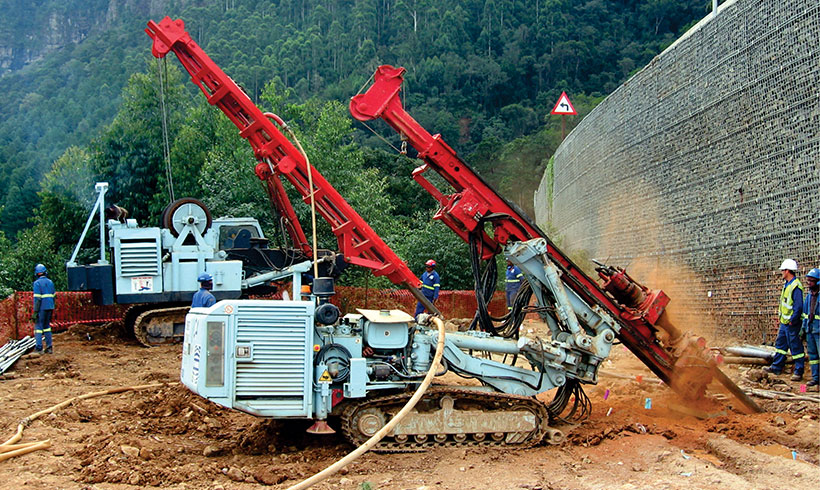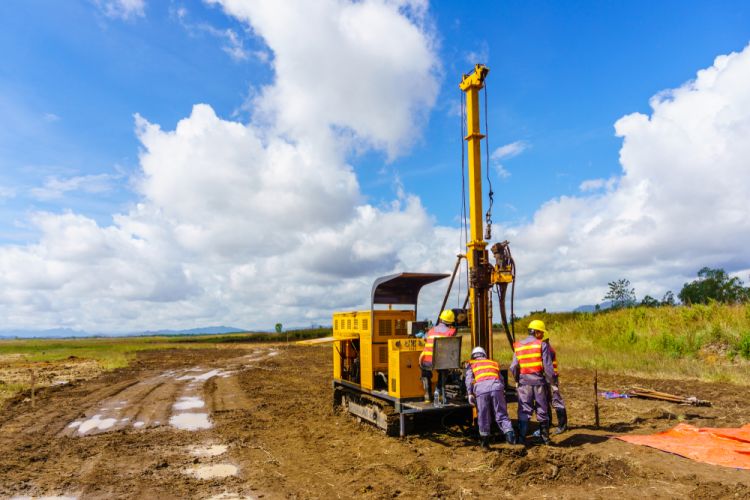An Unbiased View of Geotechnical Engineering For Construction Projects
An Unbiased View of Geotechnical Engineering For Construction Projects
Blog Article
The Of Geotechnical Engineering For Construction Projects
Table of ContentsThe Definitive Guide to Geotechnical Engineering For Construction Projects5 Easy Facts About Geotechnical Engineering For Construction Projects DescribedThings about Geotechnical Engineering For Construction ProjectsWhat Does Geotechnical Engineering For Construction Projects Mean?Getting My Geotechnical Engineering For Construction Projects To Work10 Simple Techniques For Geotechnical Engineering For Construction Projects
These features must be taken a look at by geotechnical engineers to anticipate their activities under various circumstances., making this analysis needed., in addition to exactly how they interact with constructions that have actually been erected on or within them, is one of the primary explanations for why geotechnical engineering is crucial.
Along with architectural preparation and construction, geotechnical design is likewise crucial to the restoration and upkeep of pre-existing structures. Age-related destruction or added issues can influence a framework's stability and effectiveness. Ecological security is accomplished through geotechnical design. Experience in air, water, and dirt quality upkeep is used by geotechnical designers to decrease the adverse impacts of tasks.
Framework growth, offshore engineering, tunnel construction, and deep structures. Risk-based design and multidisciplinary groups. These elements will certainly keep the field evolving and guarantee its ongoing importance in the years ahead. To sum up, geotechnical engineering is an essential technique that protects the resilience and honesty of civil facilities. Geotechnical engineers add to making building tasks effective all over the world by understanding the behaviour of earth materials and using suitable preparation strategies.
Fascination About Geotechnical Engineering For Construction Projects
The fundamental security of any type of job is necessary. Geotechnical engineering plays a critical duty in guaranteeing that frameworks are improved strong ground, actually and figuratively. By examining dirt, rock, and subsurface conditions, geotechnical engineers offer crucial understandings that aid in the design, construction, and maintenance of structures and infrastructure.

The Of Geotechnical Engineering For Construction Projects
Research laboratory screening: Establishing the buildings of soil and rock. Field screening: Performing examinations on-site to examine problems. Analysis and layout: Utilizing data to develop structures, keeping walls, tunnels, and various other frameworks. Numerous top-level building jobs have effectively used geotechnical engineering to ensure their security and safety. :: The globe's highest structure called for a deep understanding of the underlying geology.

As a leader in geotechnical design, BECC Inc. is devoted to delivering ingenious and efficient solutions that fulfill the greatest standards of quality and safety and security. For more details on exactly how BECC Inc. can support your next building task, contact us today and let us help you develop on strong ground.
William Rankine, an engineer and physicist, established a different to Coulomb's planet pressure theory. Albert Atterberg created the clay consistency indices that are still utilized today for soil category. In 1885, Osborne Reynolds acknowledged that shearing reasons volumetric dilation of dense products and tightening of loose granular materials. Modern geotechnical engineering is claimed to have started in 1925 with the magazine of Erdbaumechanik by Karl von Terzaghi, a mechanical engineer and geologist.
Geotechnical Engineering For Construction Projects - Truths
Terzaghi likewise developed the framework for theories of birthing ability of foundations, and the theory for prediction of the price of negotiation of clay layers because of loan consolidation. After that, Maurice Biot completely established the three-dimensional dirt loan consolidation concept, prolonging the one-dimensional model formerly created by Terzaghi to a lot more general hypotheses and introducing the set of standard formulas of Poroelasticity.
Geotechnical designers examine and establish the buildings of subsurface pop over to this site problems and materials. They also develop matching earthworks and maintaining structures, tunnels, and structure structures, and might oversee and examine sites, which might additionally include site monitoring along with the danger assessment and mitigation of natural threats - Geotechnical Engineering for Construction Projects. Geotechnical engineers and engineering rock hounds carry out geotechnical investigations to acquire information on the physical residential properties of soil and rock hidden and surrounding to a site to develop earthworks and structures for recommended structures and for the repair work of distress to earthworks and frameworks triggered by subsurface conditions.
The Of Geotechnical Engineering For Construction Projects
, which utilizes a thick-walled split spoon sampler, is the most usual method to collect disrupted samples.

Commonly, the interface's specific geometry is unknown, and a streamlined interface geometry is thought. Finite slopes call for three-dimensional models to be assessed, so most slopes are assessed assuming that they are considerably vast and can be represented by two-dimensional versions.
About Geotechnical Engineering For Construction Projects
The empirical approach might be called adheres to: General expedition enough to develop the harsh nature, pattern, and residential properties of down payments. Analysis of one of the most likely problems and one of the most undesirable possible variances. Developing the style based on a working theory of behavior anticipated under the most probable problems. Choice of amounts to be observed as construction proceeds and calculating their site link expected worths based on the functioning hypothesis under the most unfavorable conditions.
Measurement of quantities and assessment of real conditions. Style modification per real conditions The empirical technique is suitable for construction that has already started when an unanticipated advancement occurs or when a failing or accident looms or has currently occurred. It is unsuitable pop over to this web-site for jobs whose style can not be changed throughout building.
Report this page